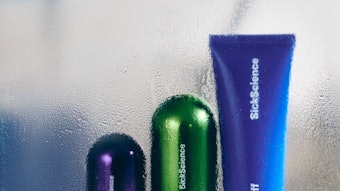Through its research into how digital shopping is affecting the marketing and selling of beauty products, Diagonal Reports has found digital screens are uniquely suited to selling skin care.
The market researcher shares that skin care is a key beauty concern all buyers want more information on. A characteristic shared by skin care consumers in different market segments and countries is that they are more knowledgeable than ever before and, as a consequence, more information-demanding than ever.
The skin care consumer not only asks more questions, but also a different range of questions than other beauty buyers because of the greater complexity of their problems and the extensive selection of solutions and brands available. The buyer must understand exactly what differentiates one skin care product and brand from another and how these specific formulations will enhance her skin appearance before parting with any money.
It is the beauty tutorial that is setting the benchmark for information and influencing and shaping skin care purchasing behavior. The video tutorial has become the prerequisite for selling premium skin care products. It allows the consumer to learn about innovative anti-aging brands, which enjoy higher profit margins. Tutorials also are crucial to selling the many different products used in complex and multi-step regimes, particularly widespread in Asian beauty cultures. Video tutorials distributed on the Internet are now available 24/7 to everyone who has a smart phone or tablet.
The screen also facilitates one-on-one consumer dialogue and enables engagement with the beauty buyer. Today, skin care consumers worldwide can ask questions and get answers in real-time—when brands make these services available—on their handheld devices. The access to expertise, which screens deliver, has revolutionized expectations of information for, and transformed how brands are evaluated by, most consumers. Its significance cannot be overestimated. In the pre-Internet and screen era, dialogue could be very effectively controlled by professionals (such as advertisers and editors) and was limited to relatively small numbers of consumers.
People spend heavily on skin care because they want to reduce or eliminate flaws such as blemishes or signs of aging on the all important face. This category now accounts for one third of global beauty sales, and even more in many Asian countries. The skin care market can only grow and grow due to changes in consumer behavior and demographics. Today's teenagers will shortly be tomorrow's anti-aging skin care buyers and their use of screens will transform what and how skin care is bought.










